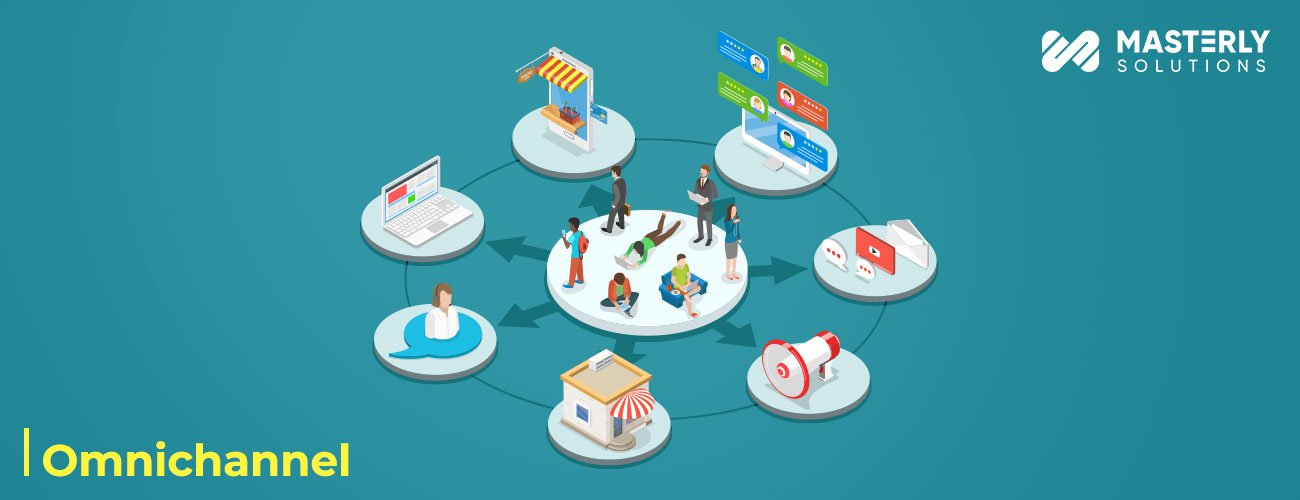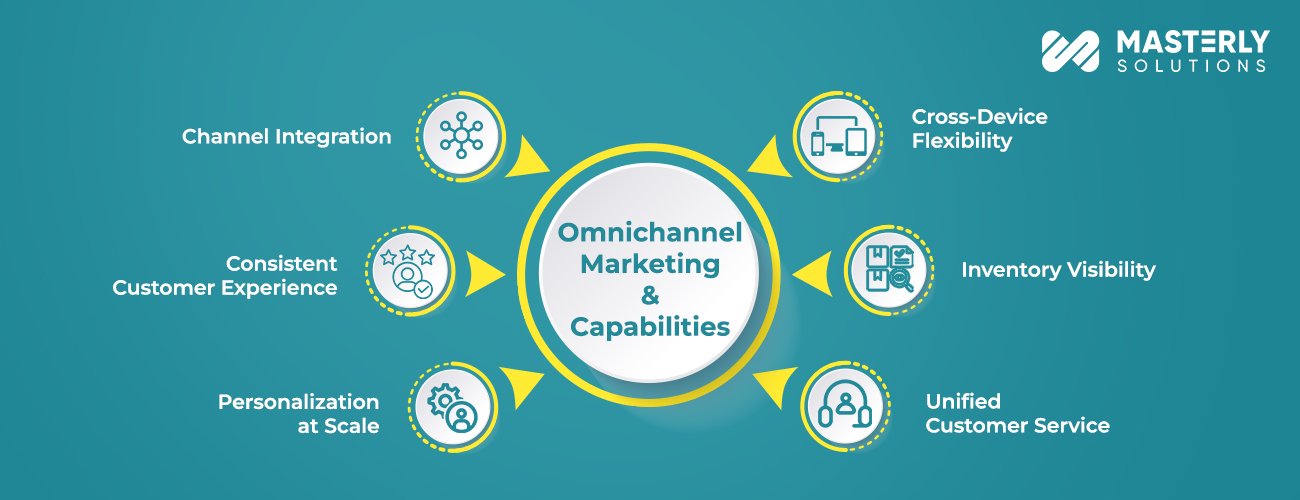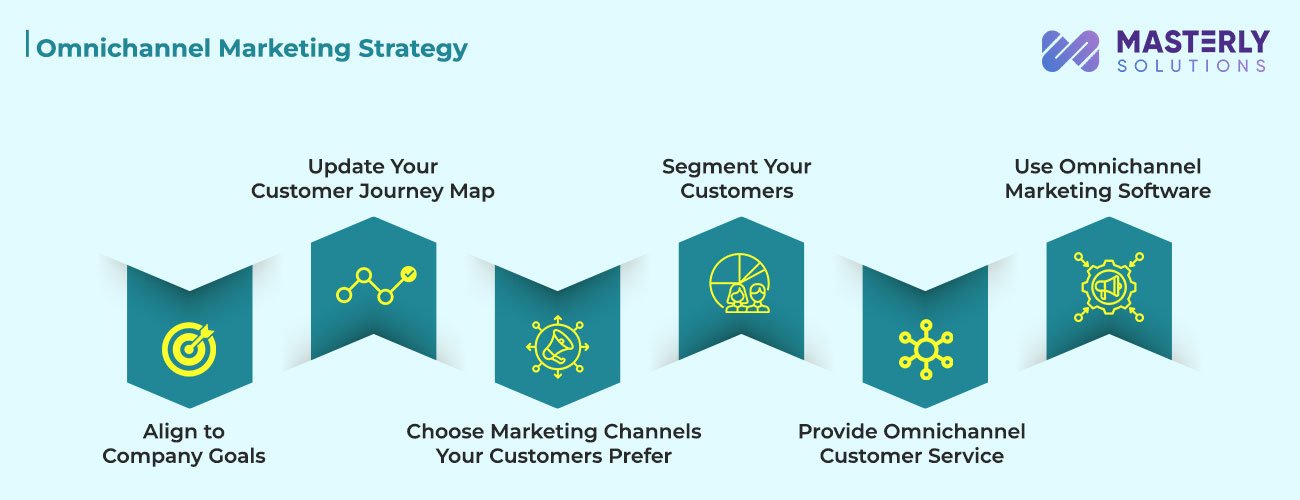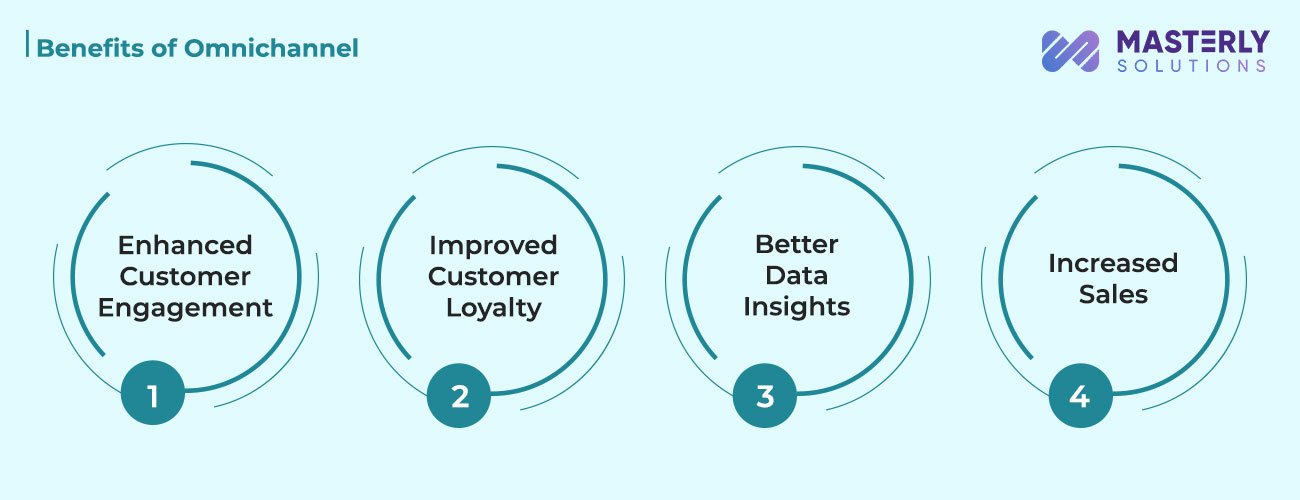
Hey there, reader! Nowadays there’s a buzzword that’s been making waves in the business world – Omnichannel. What’s it all about, you ask? Omnichannel is becoming increasingly vital for businesses striving to stay competitive and meet the ever-evolving demands of their customers.
Well, are you in for a treat because we’re going to unravel the mysteries of Omnichannel marketing right here.
What is Omnichannel?
The term “Omnichannel” is derived from “omni,” which means all or universal, and “channel,” referring to the various communication and sales channels available today. So, Omnichannel means creating a universal and cohesive experience across all these channels.
Let’s understand with real life examples. Let’s take an example of Netflix. You can easily switch and browse between mobile phone, tablet, laptop or tv, because it’s an omnichannel experience. So. it doesn’t matter which device you are using, it automatically resumes from where you left.
Omni-channel is like the superhero of marketing. It’s the strategy that makes sure you have a consistent experience with a brand, no matter where or how you interact with them. Whether you’re online, offline, or somewhere in between, it’s all about keeping things smooth and connected.
Omnichannel Marketing and It’s Capabilities:

Omnichannel marketing is like a ninja that combines various channels, like websites, mobile apps, social media, emails and even physical stores. This grand integration lets businesses provide a consistent customer experience.
Omni-channel marketing capabilities are all about providing customers with a seamless, personalized and consistent journey across all channels. It’s like having a friendly guide accompany you through your shopping adventure, whether you’re online or offline.
Let’s explore how this powerful strategy is transforming customer engagement.
1. Channel Integration
Omnichannel capabilities revolve around the idea of integrating various channels seamlessly. It’s like connecting the dots between online and offline worlds. Customers can interact with your brand through your website, mobile app, social media, email, physical stores and even customer service hotlines.
All these channels are interconnected, creating a unified brand presence.
2. Consistent Customer Experience
Suppose if you receive a promotional email with a special discount on a product. You click the link, browse the product on the website, and later you decide to visit the physical store to check it out in person.
In the store, the staff is aware of your online activity, and they offer assistance related to the product you were looking at. This consistency in the customer experience and one of the core capabilities of Omnichannel.
3. Personalization at Scale
Omnichannel capabilities allow businesses to harness the power of customer data. By tracking customer interactions across various channels, you can gain valuable insights into their preferences, behavior and journey patterns.
Armed with this data, you can create personalized marketing campaigns, recommend products tailored to individual tastes and provide a level of customization that resonates with customers.
4. Cross-Device Flexibility
Nowadays, customers use multiple devices throughout their journey. They might start on their smartphone, switch to a tablet and complete the transaction on a desktop computer. This is called cross-device flexibility.
Omnichannel capabilities ensure that the transition between devices is smooth. For example, you can add items to your shopping cart on your phone and then easily access the same cart from your laptop when you’re ready to make the purchase.
5. Inventory Visibility
Ever experienced the frustration of visiting a store only to find out that the product you want is out of stock? Omnichannel capabilities address this by providing real-time inventory visibility.
If a product is unavailable in a physical store, customers can check its availability online and even reserve it for in-store pickup. This reduces customer frustration and enhances their shopping experience.
6. Unified Customer Service
Omnichannel capabilities extend to customer service. Whether a customer reaches out through live chat, email, phone or social media, businesses can provide consistent and efficient support. Agents have access to the customer’s interaction history, ensuring a more personalized and effective resolution to issues.
Omnichannel marketing empowers businesses to seamlessly integrate various channels and touchpoints, ensuring that customers experience a consistent brand identity and message across all interactions.
Omnichannel Marketing Strategy:

Alright, let’s talk about strategy. In the world of modern marketing, where customers roam freely across various channels, having a solid Omnichannel Marketing strategy is like unveiling a superpower.
It’s about crafting seamless and interconnected customer experiences. Here’s your roadmap to success:
1. Align to Company Goals
The first step in crafting an effective Omnichannel Marketing strategy is to align it with your company’s broader goals. What are you trying to achieve? Is it increased sales, higher customer satisfaction or perhaps expanding your brand’s reach?
Your Omnichannel strategy should be designed to support these overarching objectives. It’s like setting your GPS to your ultimate destination before embarking on a journey.
2. Update Your Customer Journey Map
Your customer journey map is your treasure map in the Omnichannel world. It outlines every touchpoint a customer has with your brand, from the first click on your website to their in-store experience. It’s essential to revisit and update this map regularly to reflect the evolving landscape of customer interactions.
This map will guide your Omnichannel efforts, ensuring that no touchpoint is left unattended. It’s like having a detailed itinerary for a cross-country road trip.
3. Choose Marketing Channels Your Customers Prefer
Here’s the golden rule of Omnichannel Marketing: be where your customers are. Research and understand the channels and platforms your target audience prefers. Do they hang out on social media? Are they more inclined to open emails? Or do they prefer in-person experiences?
Tailor your marketing efforts to these preferences. It’s like speaking their language, making it easier for them to engage.
4. Segment Your Customers
Not all customers are the same, and that’s where segmentation comes into play. Divide your customer base into groups based on demographics, behavior or preferences. This allows you to deliver more personalized marketing messages and experiences.
It’s like offering a menu with various options to cater to different tastes and preferences.
5. Provide Omnichannel Customer Service
Customer service should be at the heart of your Omnichannel strategy. Ensure that customers can reach out to you seamlessly, no matter the channel they choose. Whether it’s live chat, email, phone or social media, consistency in service is key.
It’s like having a helpful guide person available at every corner of a luxury hotel.
6. Use Omnichannel Marketing Software
To make all this possible, you’ll need the right tools. Omnichannel Marketing software can help you manage and orchestrate your campaigns across multiple channels. It allows you to track customer interactions, analyze data and automate processes. It’s like having a trusty sidekick who takes care of the nitty-gritty details while you focus on the big picture.
There are many software development companies out there who provide software development services as per your requirements.
Remember, the essence of Omnichannel Marketing is to create a seamless and interconnected experience for your customers. It’s like hosting a party where every guest feels welcome, regardless of the entrance they choose.
Omnichannel Examples:
There is no better way than to understand a thing which relates to real life. Alright, let’s break Omnichannel marketing down with some real-life examples:
Retail Stores:
You know Apple, right? They have nailed Omnichannel by allowing customers to explore products online, make in-store reservations, and receive expert assistance in physical stores. This harmonious integration ensures that customers receive a seamless experience, whether they engage online or offline.
It’s like a tech lover’s dream come true.
E-commerce Giants:
Think of Amazon. They make shopping feel like a breeze, whether you’re on your computer, phone or even chatting with Alexa. It’s like they’re saying, “We’re here for you, wherever you are.”
Benefits of Omnichannel:

Why should businesses bother with all this Omnichannel stuff? Well, here are some fantastic perks
Enhanced Customer Engagement: Omnichannel allows businesses to engage with customers more effectively through multiple touchpoints, increasing the chances of successful interactions.
Improved Customer Loyalty: Consistency across channels fosters trust and loyalty among customers. When they have a seamless experience, they’re more likely to return.
Better Data Insights: Omni-channel platforms provide businesses with valuable data that can be used to create personalized marketing campaigns, improve product offerings and optimize the customer journey.
Increased Sales: When customers can transition smoothly between channels, it often leads to higher conversion rates and increased sales. It simplifies the path from consideration to purchase.
Omnichannel CRM:
Customer Relationship Management (CRM) systems play a crucial role in Omnichannel marketing. They help businesses manage and analyze customer interactions across channels.
What is the Difference Between Omnichannel and Multichannel?

This is a question that often pops up in discussions about omnichannel marketing vs multichannel marketing. The key difference lies in how these approaches treat channels:
Multichannel:
In a Multichannel strategy, businesses use various channels independently. Each channel operates in isolation, catering to different segments of the audience. There may be little to no integration between these channels.
While this approach allows businesses to establish a presence across multiple platforms, it lacks the consistency and cohesiveness of Omnichannel.
Omnichannel:
Omnichannel, on the other hand, is all about creating a seamless and consistent customer experience across all channels. It involves integrating various channels and touchpoints, ensuring that the customer journey is smooth and interconnected.
The focus is on delivering a unified brand message, regardless of where or how customers interact with the brand.
In short, Multichannel is like having multiple teams working independently, while Omnichannel is like having a synchronized orchestra playing in harmony.
Conclusion:
So, there you have it, a friendly tour of the world of Omnichannel marketing. By offering a consistent, personalized and hiccup-free experience across all touchpoints, Omnichannel marketing is changing the game.
It’s all about making sure your journey with a brand is smooth, memorable and delightful, no matter where you are.
